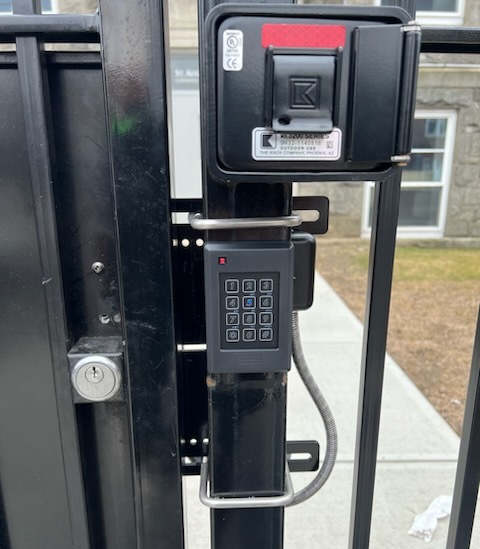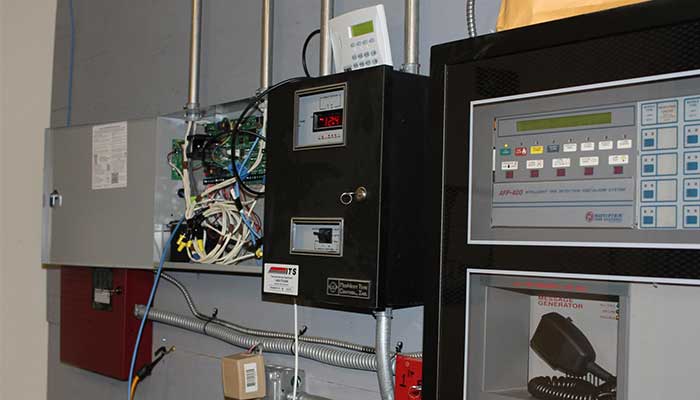Video MGMT System
 Access Control
Access Control
Voice & Data Wiring
 Burglar Alarm
Burglar Alarm
 Fire Alarm
Fire Alarm
Video MGMT System
Voice & Data Wiring
Too busy to read? Here’s a summary:
If you're a decision-maker at a commercial property or organization, it’s crucial that you understand the different approaches to assigning privileges to access control credentials.
Keep on reading to learn about the three most common access control policies for assigning site privileges to credentials.
Discretionary access control, commonly known as DAC, is the most straightforward kind of access control system.
Generally used in smaller organizations, DAC grants access based on the identity of the user. Administrators have the discretion to set permission levels for individuals and can allow specific users to read, write, execute, or delete data.
Mandatory access control (MAC) systems are often deployed in organizations where data security is of utmost importance, such as military institutions. In MAC, access to resources is strictly regulated by an overarching policy defined by a central authority.
Role-based access control systems, abbreviated as RBAC, assign access permissions based on a credential holder’s role within an organization. For example, an HR manager would have access to employee records, whereas a sales executive would not.
Before diving into the pool of available options, it’s critical to understand what exactly you’re looking to protect. Is it sensitive customer data, trade secrets, or the physical premises of your organization?

In a financial institution, like bank security systems, where sensitive customer data and substantial financial assets are at stake, the focus should be on a high-security access control system. This environment would be highly unsuitable for a Discretionary Access Control (DAC) system, where permissions are at the discretion of the user. The risk of internal or external fraud is too high to leave to individual choices.
Why MAC Is Useful Here
In such cases, a Mandatory Access Control (MAC) system would be a better fit, given its centralized, stringent approach to security protocols. MAC systems can be tuned to offer different levels of access to varying degrees of sensitive information, ensuring only the right people have access to the right data.

Not all access control systems are made equal when it comes to the level of technical expertise required for their setup and management. Make sure you either have the in-house technical chops or are willing to outsource to specialists.
Small retail businesses may not have a dedicated IT team, and their primary concern might be the physical security of the store rather than intricate data sets. Here, implementing a complex MAC system would be overkill and could lead to operational difficulties.
Why DAC Is Useful Here
A discretionary access control (DAC) system would be more suitable for such a setting. It's easier to implement and manage, and the owner or manager can easily set permissions for staff members. However, the DAC system should still be set up carefully to ensure that employees have only the access they need.
Whether it’s HIPAA, GDPR, or any other governmental regulation, you simply can’t afford to overlook compliance. Ensure that the system you choose meets all the relevant legal requirements.
Healthcare providers are obligated to comply with HIPAA regulations, which govern the storage, access, and sharing of patient information. Failure to comply could result in legal repercussions and severely damage an organization's reputation.
Why RBAC is Useful Here
In this scenario, Role-Based Access Control (RBAC) is often ideal. RBAC allows for detailed customization of access based on roles like healthcare providers, administrators, and clerks, ensuring that patient data is only accessible by authorized personnel. It's easier to manage HIPAA compliance when you can assign and track roles meticulously.
Understanding the types of access control systems is crucial for any commercial property or organization looking to upgrade or install new security measures. By acquainting yourself with systems like DAC, MAC, and RBAC, you can make an informed decision that aligns with your security needs, budget, and compliance requirements.
For the best access control products and installations, fill out the form to schedule a free site survey with an expert from the Mammoth Security team.
NOT COMPLETELY SURE?
860-748-4292An access control system is a security framework that regulates who or what can view or use resources within a particular environment. It functions by authenticating and authorizing entities to gain access to specific areas or data.
There are primarily three types of access control systems: discretionary access control (DAC), mandatory access control (MAC), and role-based access control (RBAC). These systems differ in their complexity, user management approach, and security levels.
Discretionary access control (DAC) is a type of system where the owner of a resource sets the permissions for who can access it. This is generally the simplest form of access control and is commonly used in smaller organizations.
Mandatory access control (MAC) is a more rigid system where access to resources is regulated by a central authority, often in accordance with government or organizational security policies. This type is generally used in environments that require higher levels of security, such as military institutions.
Role-based access control (RBAC) allocates permissions based on the roles within an organization. Rather than assigning permissions to individual users, permissions are associated with various roles.
Regulatory compliance depends on the specific system, how it's configured, and specific industry regulations. Many modern access control systems are designed to be compliant with regulations like HIPAA for healthcare and GDPR for data protection in Europe.
The complexity of implementation varies depending on the type of system and the specific needs of your organization. DAC is generally the easiest to implement, while MAC systems require extensive planning and technical expertise.
Yes, transitioning is possible, but it often involves considerable planning, time, and resources. It may require data migration, reconfiguration, and extensive testing to ensure that the new system meets all requirements and functions as desired.
Plan carefully by assessing your current systems and identifying gaps. Always go through a testing phase to iron out any issues. Finally, make sure to train your staff adequately to handle the new system efficiently.